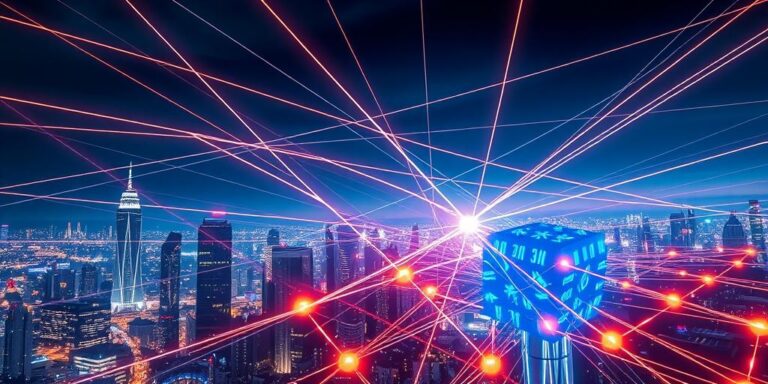Building the Quantum Internet: Challenges and Timelines (2030s)
The quantum internet, a revolutionary network leveraging the principles of quantum mechanics, promises unparalleled security and computational power. Unlike the classical internet, which transmits information as bits (0s and 1s), the quantum internet uses qubits. Qubits can exist in a superposition, representing 0, 1, or both simultaneously, and entanglement, where two qubits are linked regardless of distance. This allows for secure quantum key distribution (QKD) and distributed quantum computing. While still in its nascent stages, significant progress is being made, and the 2030s are envisioned as a critical period for its development.
Current Status and Key Technologies
Several key technologies are crucial for building a functional quantum internet:
- Quantum Key Distribution (QKD): Enables unbreakable encryption by distributing cryptographic keys using quantum mechanics.
- Quantum Repeaters: Necessary to extend the range of quantum communication by overcoming signal loss due to fiber optic cable limitations.
- Quantum Processors: Will allow for distributed quantum computing, where multiple quantum computers work together to solve complex problems.
- Quantum Memory: Essential for storing and retrieving qubits, enabling more complex quantum network operations.
Currently, QKD systems are commercially available, but their range is limited. Quantum repeaters are under development, with various approaches being explored, including those based on trapped ions, photons, and superconducting circuits. Quantum processors are rapidly advancing, but scaling them up to the number of qubits needed for practical applications remains a challenge. Quantum memory is still in the early stages of development.
Challenges in Building the Quantum Internet
Despite the immense potential, several challenges must be addressed to realize a fully functional quantum internet:
- Distance and Signal Loss: Quantum signals degrade over long distances in fiber optic cables. Quantum repeaters are needed to amplify and correct these signals, but building efficient and reliable quantum repeaters is a significant hurdle.
- Decoherence: Qubits are extremely sensitive to environmental noise, which can cause them to lose their quantum properties (decoherence). Maintaining the coherence of qubits for extended periods is crucial for quantum communication and computation.
- Scalability: Scaling up quantum systems (processors, memory, repeaters) while maintaining their fidelity is a major engineering challenge. The more qubits involved, the more difficult it is to control and manage them.
- Standardization: Lack of standardized protocols and interfaces hinders the interoperability of different quantum devices and networks. Establishing common standards is essential for building a global quantum internet.
- Cost: The cost of developing and deploying quantum technologies is currently very high. Reducing the cost through technological advancements and economies of scale is necessary for widespread adoption.
Timelines and Projections for the 2030s
The 2030s are expected to be a pivotal decade for the quantum internet. Here’s a plausible timeline:
- Early 2030s: Development of advanced quantum repeaters capable of extending the range of quantum communication to several hundred kilometers. Deployment of regional quantum networks connecting major cities.
- Mid-2030s: Initial standardization of quantum communication protocols and interfaces. Demonstration of distributed quantum computing across multiple quantum processors.
- Late 2030s: Establishment of national quantum internet backbones. Integration of quantum networks with classical networks. Early adoption of quantum-resistant cryptography to protect against quantum computer attacks.
Potential Applications
The quantum internet will revolutionize various fields:
- Secure Communication: Providing ultra-secure communication channels for governments, financial institutions, and other organizations that require the highest levels of security.
- Distributed Quantum Computing: Enabling the solution of complex problems that are beyond the capabilities of classical computers, such as drug discovery, materials science, and financial modeling.
- Quantum Sensing: Facilitating the development of ultra-sensitive sensors for various applications, including medical diagnostics, environmental monitoring, and defense.
- Fundamental Science: Advancing our understanding of quantum mechanics and enabling new scientific discoveries.
Conclusion
Building the quantum internet is a complex and challenging endeavor, but the potential rewards are enormous. The 2030s are expected to be a critical period for its development, with significant advancements in quantum repeaters, standardization, and integration with classical networks. While widespread adoption may take longer, the quantum internet promises to transform communication, computation, and sensing, ushering in a new era of technological innovation. Focus keywords: Quantum Internet, Quantum Communication, Quantum Technology. Long tail keywords: Quantum internet challenges, Quantum internet timeline 2030, Quantum internet applications.




